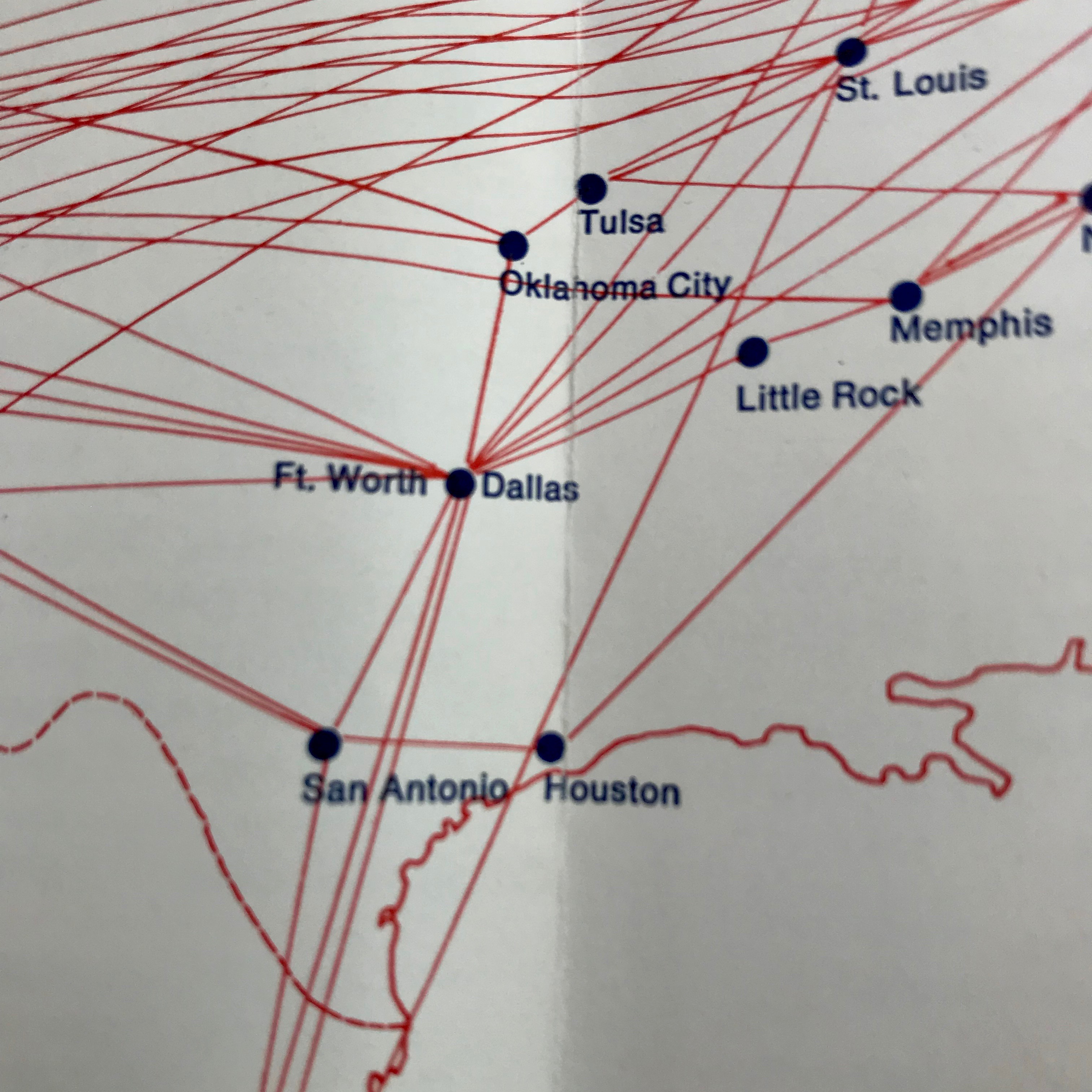American Airlines – effective April 27, 1969
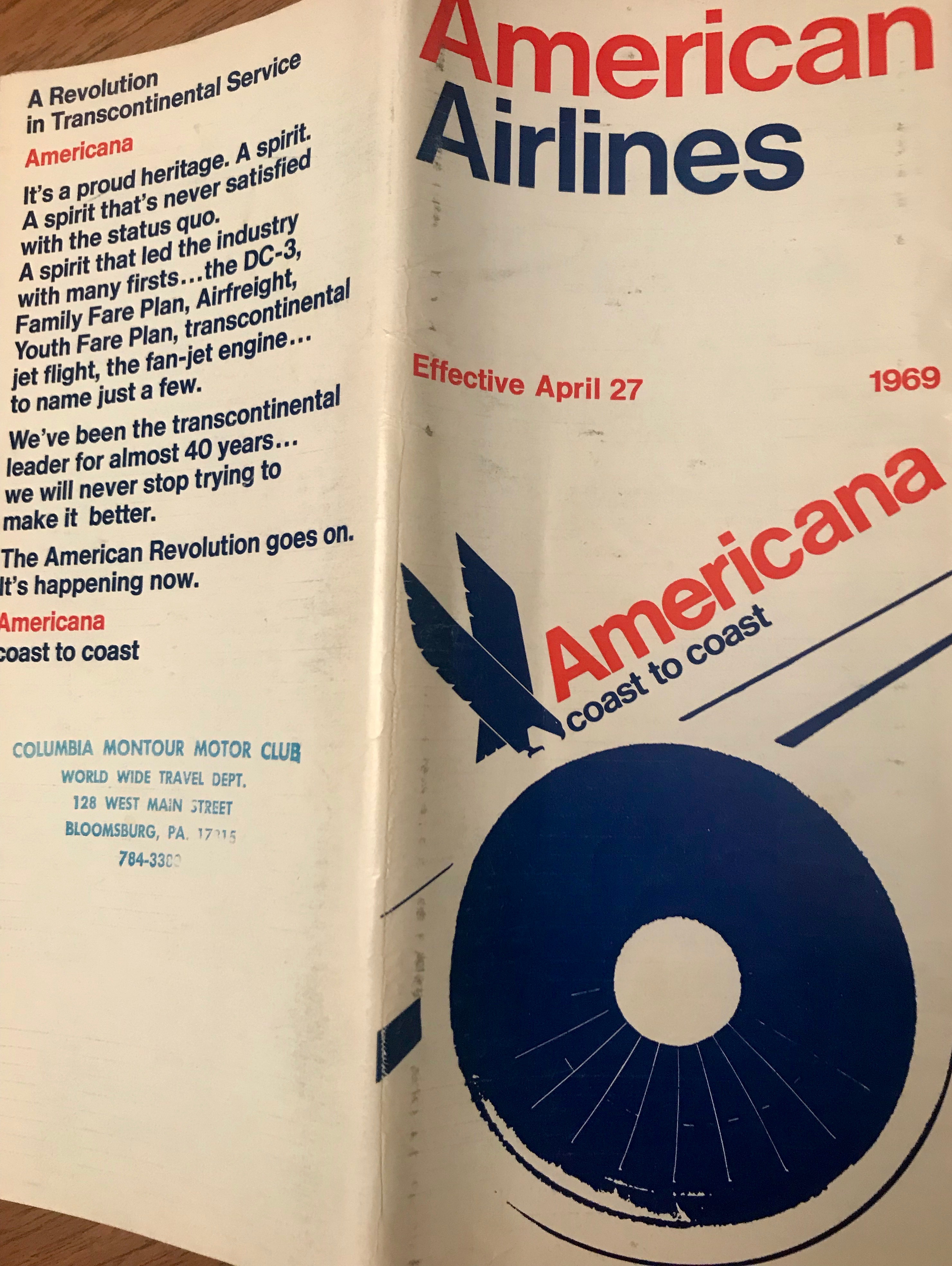
In honor of the 50th anniversary of the Stonewall Inn riots in New York City I thought I’d find a timetable that represents this time in history in aviation. American is a great example, because they were based in NYC until the 1979 switch to Dallas/Ft. Worth airport. This timetable would’ve been in use for several months, taking us to the June, 1969 time period.
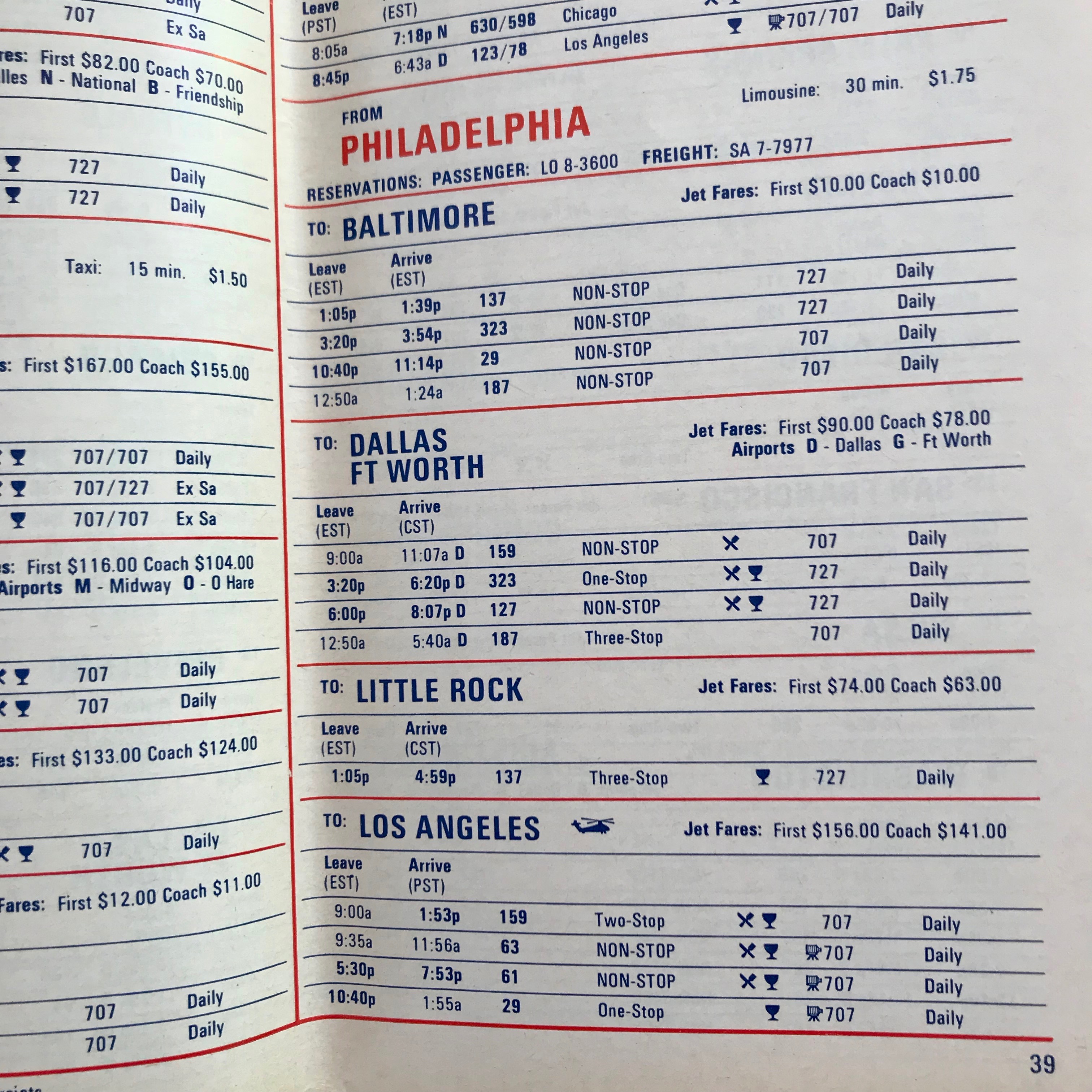
I love this vintage of timetable because it displays the aircraft type, which is interesting because the only jets AA operated were the 707 and 727. The 707 had many variants, but flew about 160 passengers longer distances like trans-con US and international. The early 727’s held about 100 passengers but Boeing built a stretched version, 727-200, which first started flying in 1967 and would’ve held about 145 passengers and flown shorter distances, such as Chicago to NYC. Boeing used the same width airframe for each, which accommodated 3-3 across seating in Coach and 2-2 in First.
The end an era, beginning of a new world
Just as the Stonewall riots started a new chapter in GLBTQ history in 1969, the airline industry was on the verge of jumping into a world with 300 seat jumbo jets, able to fly across continents and further connect the world.
Already when this timetable was produced airlines like AA had orders for a new generation of jumbo jets, which would replace planes like the 707 on trans-con and international flights.
The wide-body monsters of the ’70’s, Boeing’s 747, Douglas’ DC10 and Lockheed’s L1011 were all in final stages of testing and production. And a brand new airframe manufacturer, Airbus, was locking in on plans for their own fly-by-wire wide body, the A300.
First flight of the wide-bodies
- Boeing 747 entered service with Pan Am in January, 1970 between New York and London.
- Douglas DC10 entered service with American in August, 1971 between LA and Chicago.
- Lockheed L1011 entered service with Eastern Airlines in April, 1972.
- Airbus A300 entered service with Air France in May, 1974.
You’ve got to fight for your rights
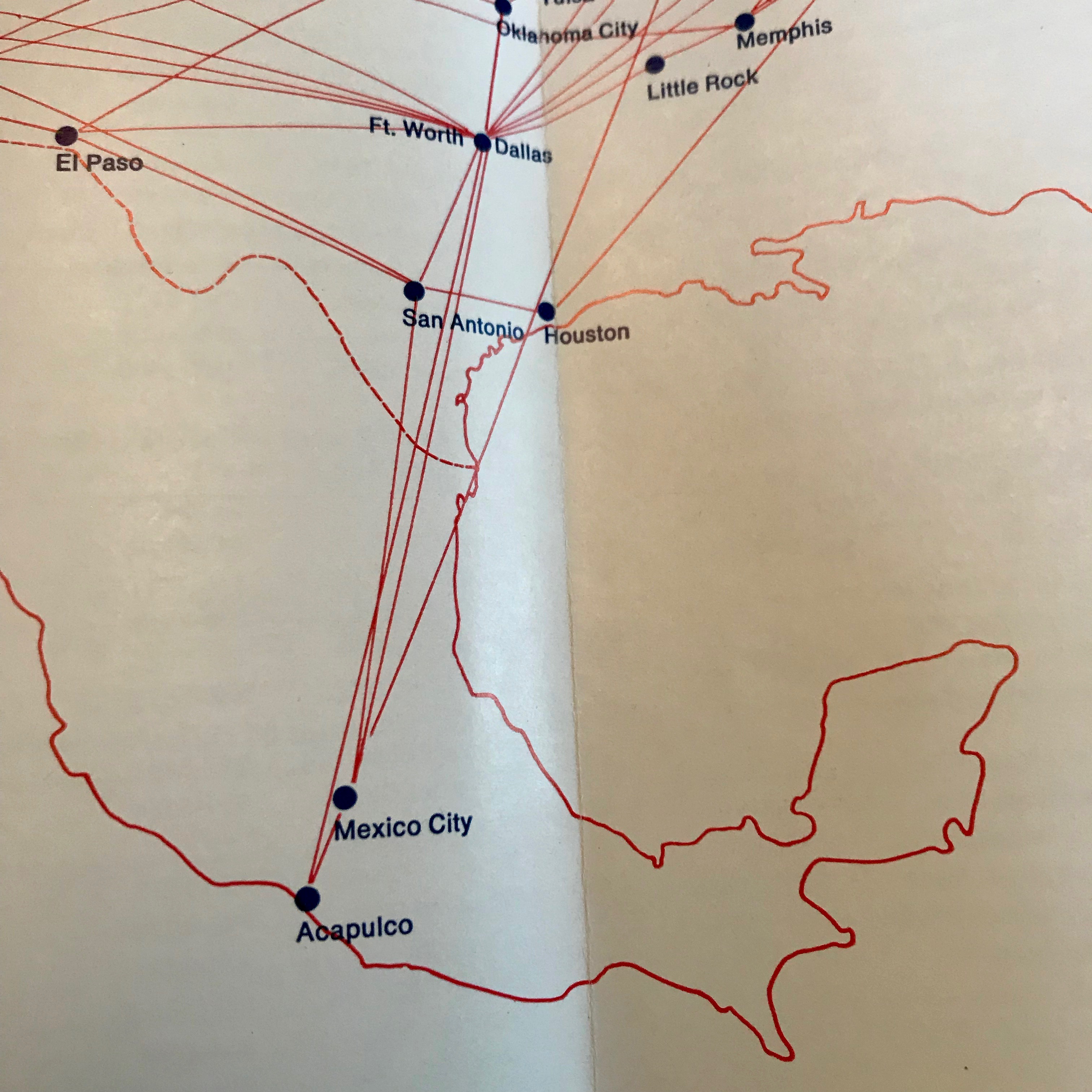
At this time international rights to fly in the world were highly regulated with Pan Am and TWA particularly strong overseas. So in the world of 1969 AA didn’t have many international options, only serving the US, Mexico and Toronto in Canada.
Things wouldn’t change for about ten more years until the deregulation act of 1978 started to gradually open up rights for other US airlines to fly overseas.
NYC always had options, in 1969 that meant 25 nonstop destinations
American flew from all three NYC airports (Kennedy, LaGuardia & Newark) to 25 different destinations nonstop, including 9 nonstops a day to LAX (from JFK and 4 from EWR) and 6 to SFO (1 from EWR).
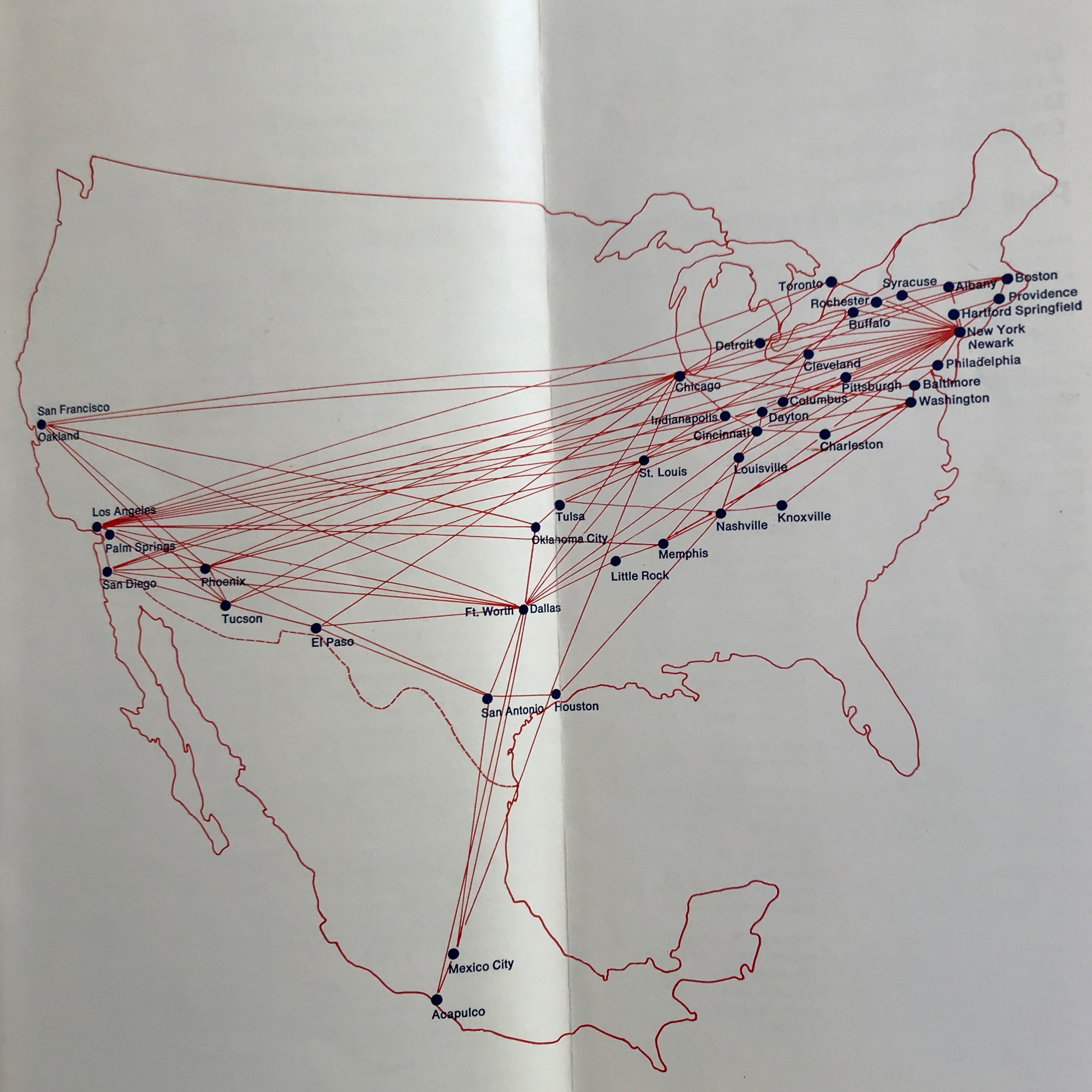
Truly transparent pricing
Another thing that’s hard to imagine in today’s super dynamic world of airline pricing is the fares printed in this timetable. Ticket prices were tightly regulated by the government in order to be sure each airline made a profit, and didn’t change very often.
Imagine just knowing that every time you want to fly between NYC and Chicago the price will always be $44 for a coach seat. ($280 in 2019 buying power)
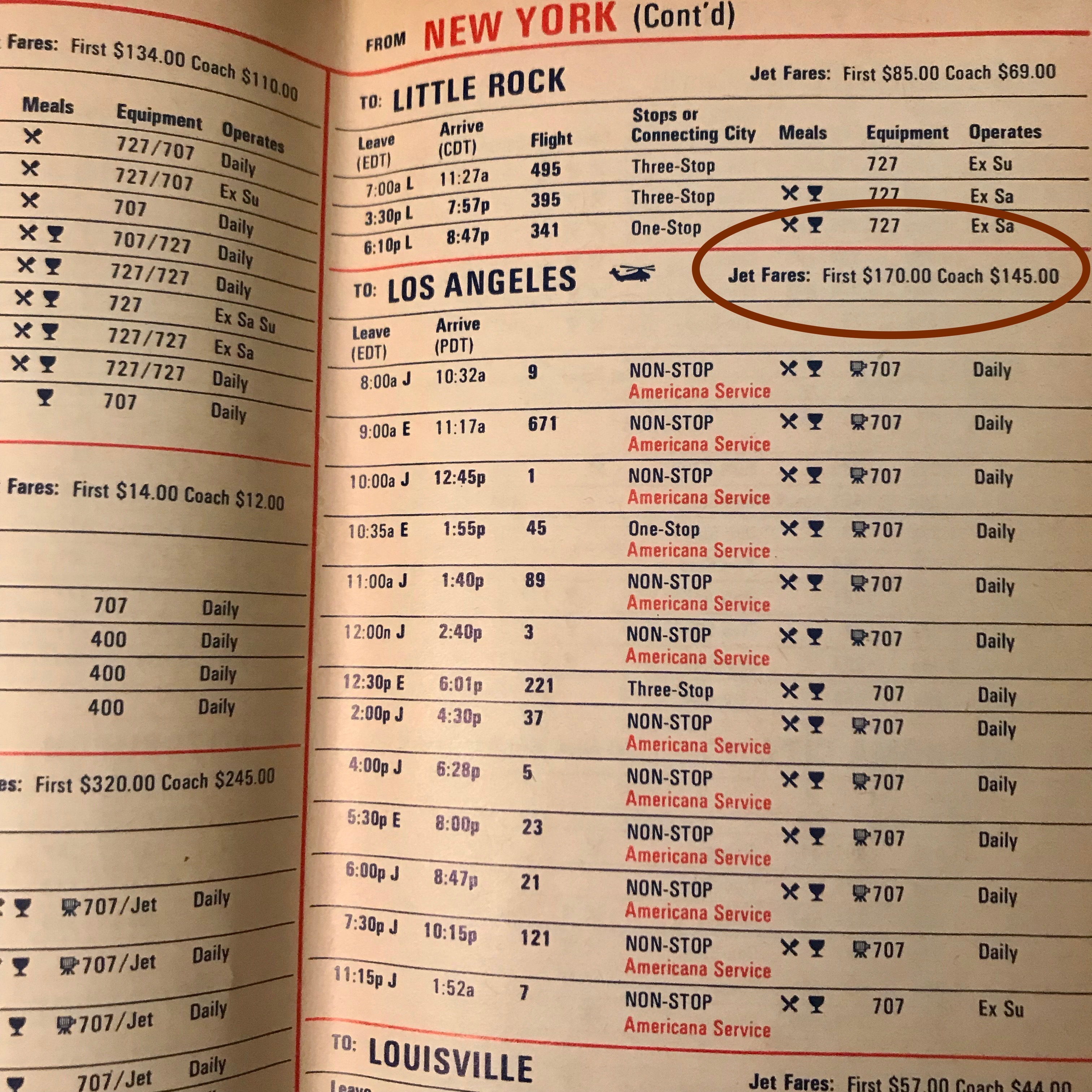
LAX and JFK were always a hot ticket
1969 NYC to LAX: First $170, Coach $145 (each way)
2019 buying power: First $1,186, Coach $1,011 (each way)
Since fares are so dynamic today, it’s difficult to lock in on the going rate to compare to 1969 money. However, today AA has about 10 flights/day between JFK and LAX and the coach fare is about $250 one way (with a few weeks advance) and about $1,600 each way in Business Class. AA also has a lie flat First Class on this market, but First Class back in the day would be similar to Business Class on AA in 2019. So coach fares have gone down while premium cabin increased.
Hub and spoke no joke
One final note is that in the time of regulation, airlines had to vie for each route to be approved by the government and would take what they could get. They were also required to agree to fly to a smaller market like DC to Knoxville, TN in trade for a more lucrative market such as Dallas to NYC. So the hub and spoke model wasn’t as robust as today.
That said, AA’s key cities of operation (not really hubs back in the day) are among the same key focus markets for them today: JFK, ORD, DFW and LAX.
